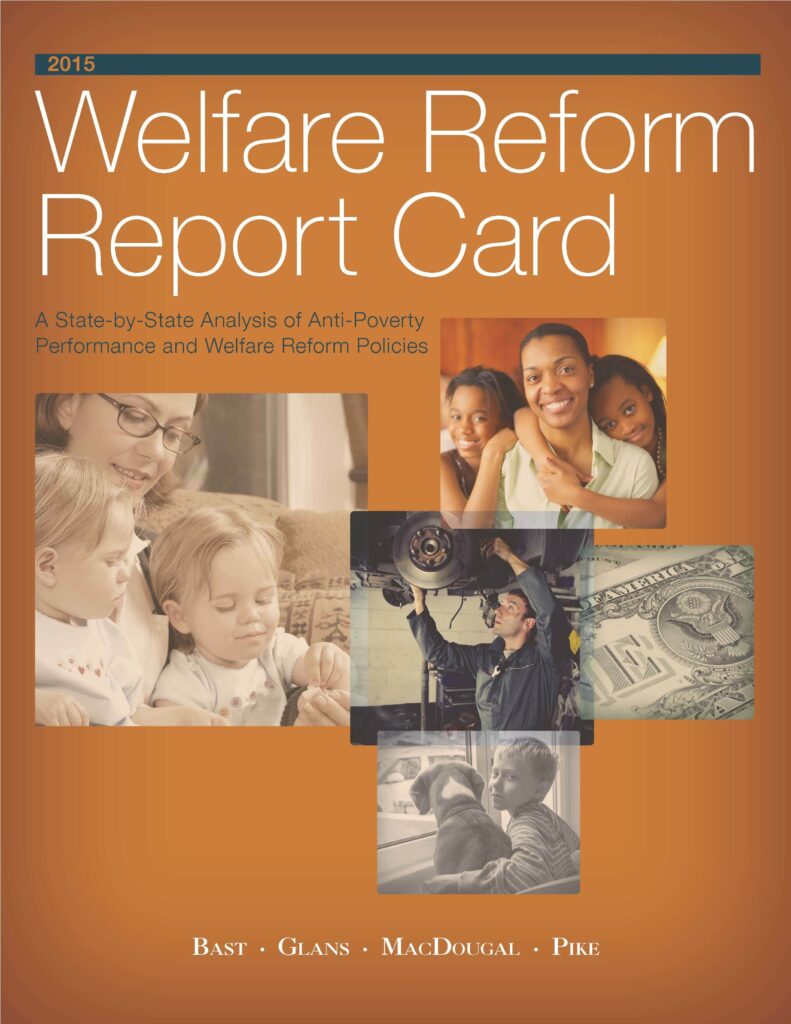Most state governments can improve the effectiveness of their efforts to help those in poverty. This 50-state report card offers policymakers and the public a roadmap for how it can be done.
The Personal Responsibility and Work Opportunity Reconciliation Act (PRWORA) of 1996 ended the Aid to Families with Dependent Children (AFDC) welfare program and created Temporary Assistance for Needy Families (TANF), a block-grant program giving states considerable latitude in designing their own programs. Some governors and legislators took full advantage of the opportunity and produced spectacular results, reducing welfare rolls as well as poverty and unemployment. Other states have been less active and less effective.
What did successful states do, and what did unsuccessful states fail to do? This report compiles extensive data on five policies and five performance outcomes for state welfare and anti-poverty programs and assigns a final grade and rank to each state on the strength of the welfare reform policies it has adopted.
Governors and state legislators can use the one-page state summaries on pages 11–60 of this report to quickly identify the strengths and weaknesses of their programs. A reform agenda that would improve the state’s ranking immediately becomes apparent, while case studies from other states demonstrate how the right policies really work in practice.
Successful welfare reform can save lives and produce positive effects on multiple generations. It can save taxpayers billions of dollars and help address such serious social maladies as crime, alcoholism, and teenage pregnancy. And it can demonstrate that government programs can be successfully devolved from the national government to states.






